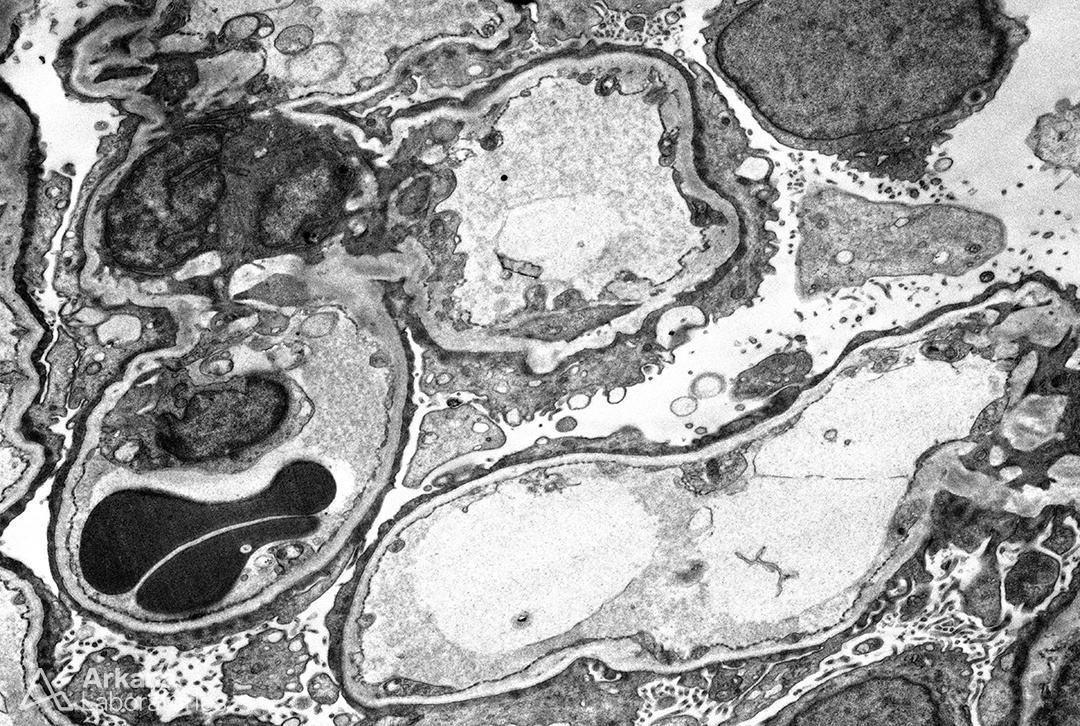What class of disease does this patient have and how did they present clinically?
The electron photomicrograph shows diffuse epithelial foot process effacement with microvillus transformation in the absence of definitive immune complex deposits and suggests a podocytopathy. While there are a few different diseases that fall under the umbrella of podocytopathy, the most common are primary focal segmental glomerulosclerosis and minimal change disease. In this case, the light microscopy shows mild acute tubular injury but no significant glomerular alterations and the immunofluorescence showed no deposits making this a minimal change disease. As expected, this patient presented with an abrupt onset of nephrotic syndrome and 8 g/g proteinuria.
Quick note: This post is to be used for informational purposes only and does not constitute medical or health advice. Each person should consult their own doctor with respect to matters referenced. Arkana Laboratories assumes no liability for actions taken in reliance upon the information contained herein.

